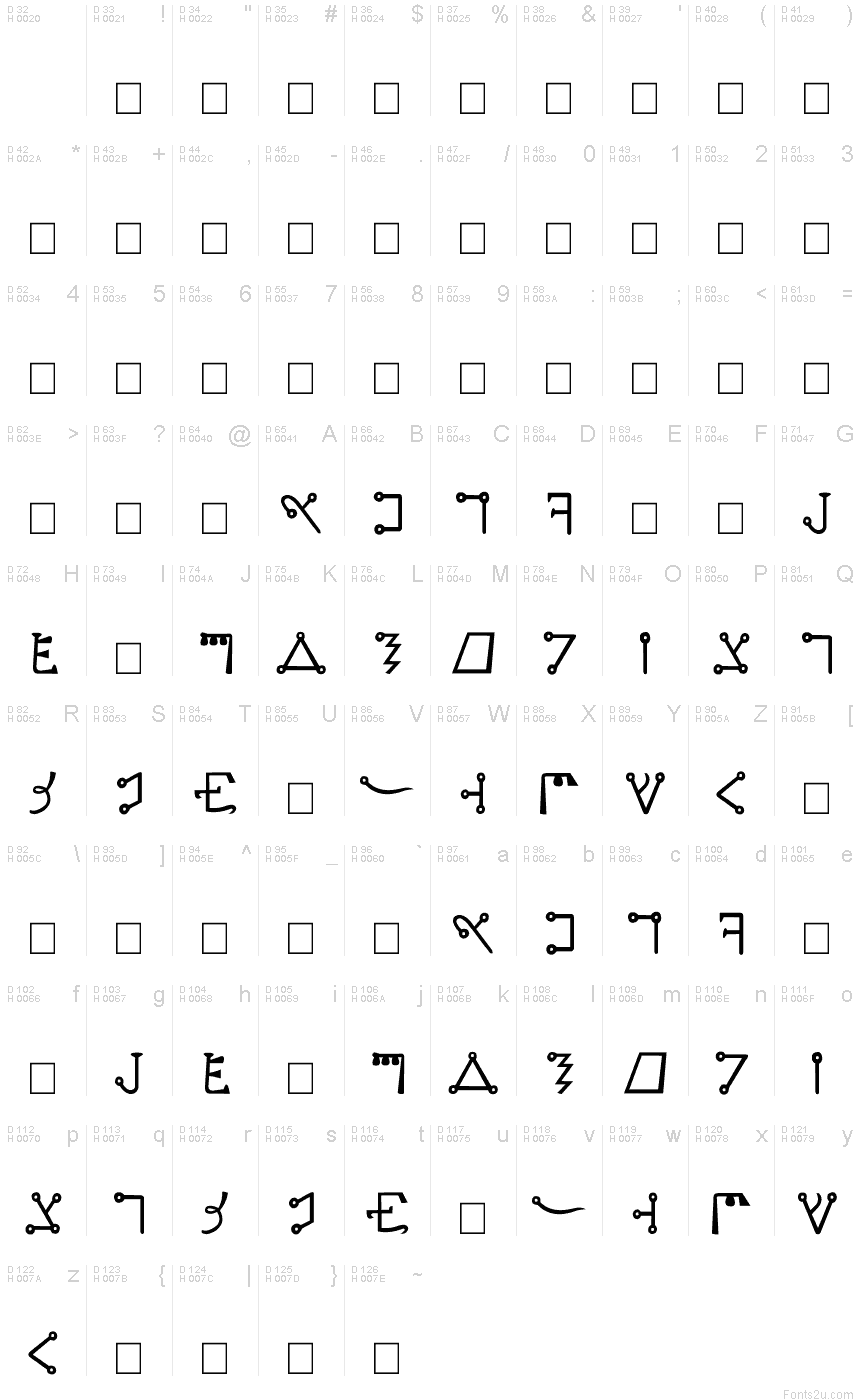Passage du Fleuve
TrueTypeOsobní použití
- Akcenty (částečné)
- Euro
Passage-du-Fleuve.ttf
Tagy
>Tabulka znaků
Prosím, použijte roletové menu ke shlédnutí různých tabulek znaků obsažených v tomto písmu.

Základní informace o písmu
Informace o autorských právech
© 2002 Daniel U. Thibault. All Rights Reserved.
Rodina písma
Passage du Fleuve
Podrodina písma
Regular
Jednoznačné označení podrodiny
Urhixidur:Passage du Fleuve Regular:2002
Celý název písma
Passage du Fleuve
Verze tabulky názvu
Version 1.00; 2002 August 28
Postscriptový název písma
Passage_du_Fleuve
Výrobce
Designer
Daniel U. Thibault
Popis
Passage du Fleuve 2002 1.00
A medieval (circa XIIth-XVth century) occult script derived from Hebrew. The French name means "Passing the River" and is probably an allusion to Deuteronomy, Chapter II, Verses 13-16, where Moses leads Israel across the river Zered into Canaan. With the Celestial and Malachim/Angelic/Royal scripts, it forms the Seraphic family of scripts. It is currently used by some Wiccan practitioners.
Passage du Fleuve is included by Heinrich Cornelius Agrippa in Book III (Ceremonial Magic), Chapter XXX («Another manner of making Characters, delivered by Cabalists») of his De Occulta Philosophia (written in 1509 and first printed in 1533), unfortunately without mentioning any details. Francis Barrett derived the alphabet from Agrippa, along with much of the text of Agrippa's book, and presented it in his «The Magus: A Complete System of Occult Philosophy», published in 1801.
A medieval (circa XIIth-XVth century) occult script derived from Hebrew. The French name means "Passing the River" and is probably an allusion to Deuteronomy, Chapter II, Verses 13-16, where Moses leads Israel across the river Zered into Canaan. With the Celestial and Malachim/Angelic/Royal scripts, it forms the Seraphic family of scripts. It is currently used by some Wiccan practitioners.
Passage du Fleuve is included by Heinrich Cornelius Agrippa in Book III (Ceremonial Magic), Chapter XXX («Another manner of making Characters, delivered by Cabalists») of his De Occulta Philosophia (written in 1509 and first printed in 1533), unfortunately without mentioning any details. Francis Barrett derived the alphabet from Agrippa, along with much of the text of Agrippa's book, and presented it in his «The Magus: A Complete System of Occult Philosophy», published in 1801.
Rozšířené informace o písmu
Podporované platformy
PlatformaKódování
UnicodeUnicode 1.0 sémantika
MacintoshZápadní (roman)
MicrosoftPouze BMP Unicode
Podrobnosti o písmu
Vytvořeno2002-08-17
Revize1
Počet znaků248
Jednotek na Em2048
Práva pro vkládáníVložení povoleno pro editování (změnu)
Rodinná třídaObrázkové
VáhaStředné (normální)
ŠířkaStředné (normální)
Mac styleTučné
SměrJen znaky směrovány zleva doprava + obsahují neutrály
VzorekNormální
VelikostRůzná